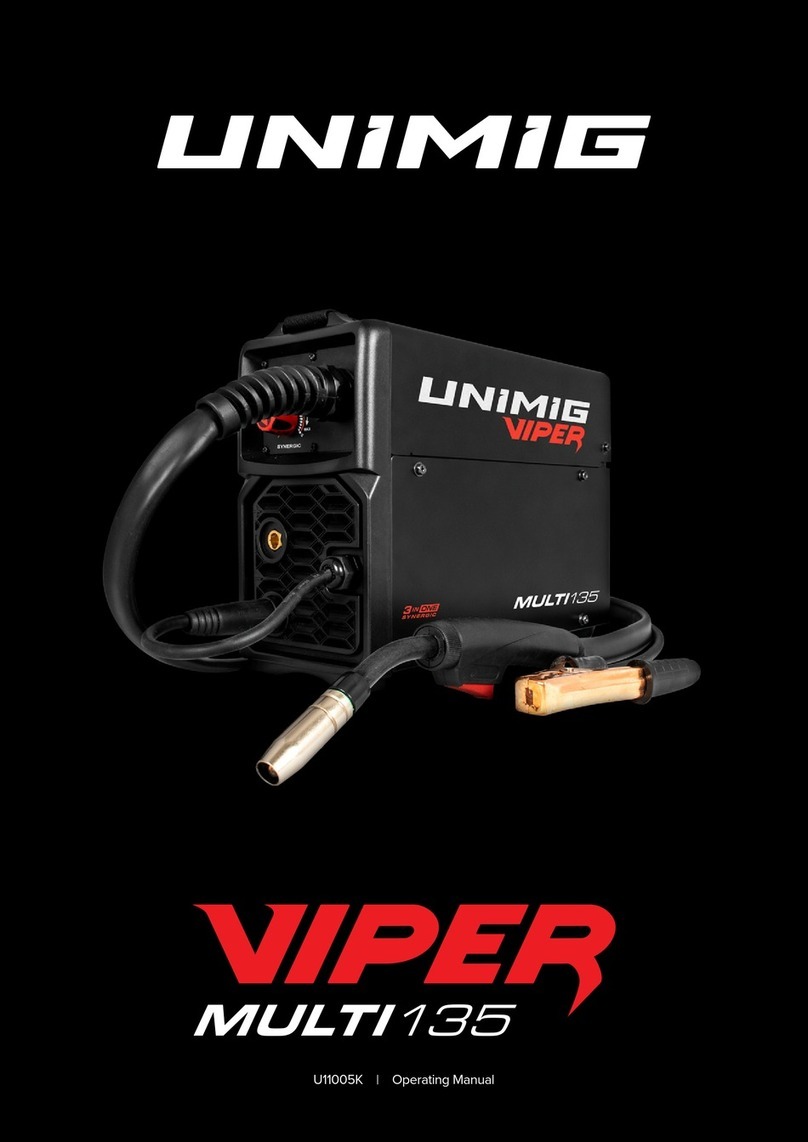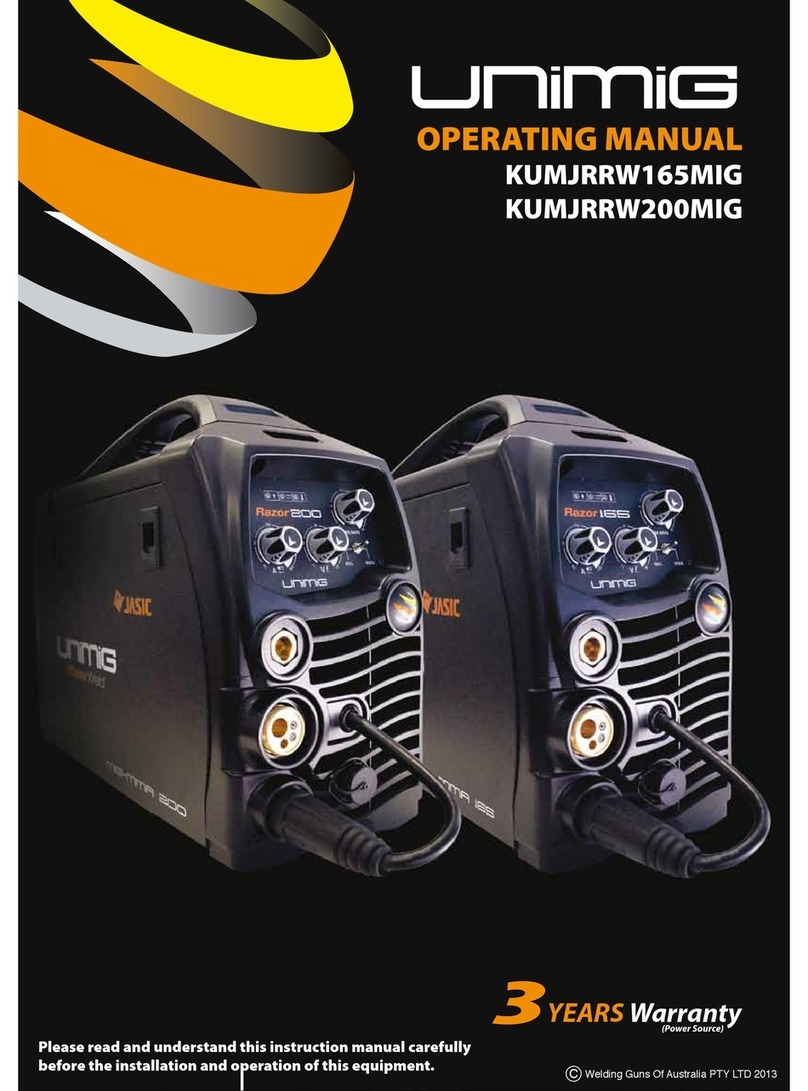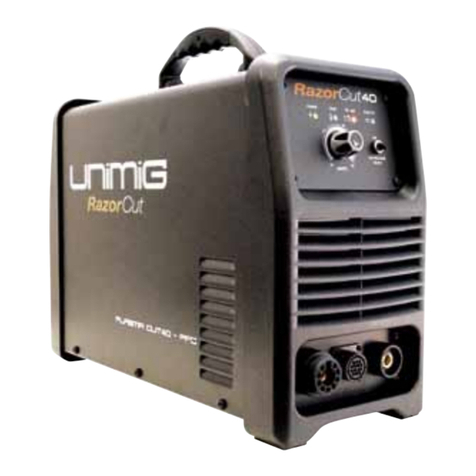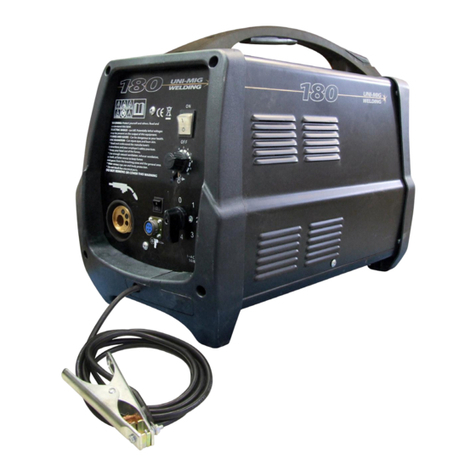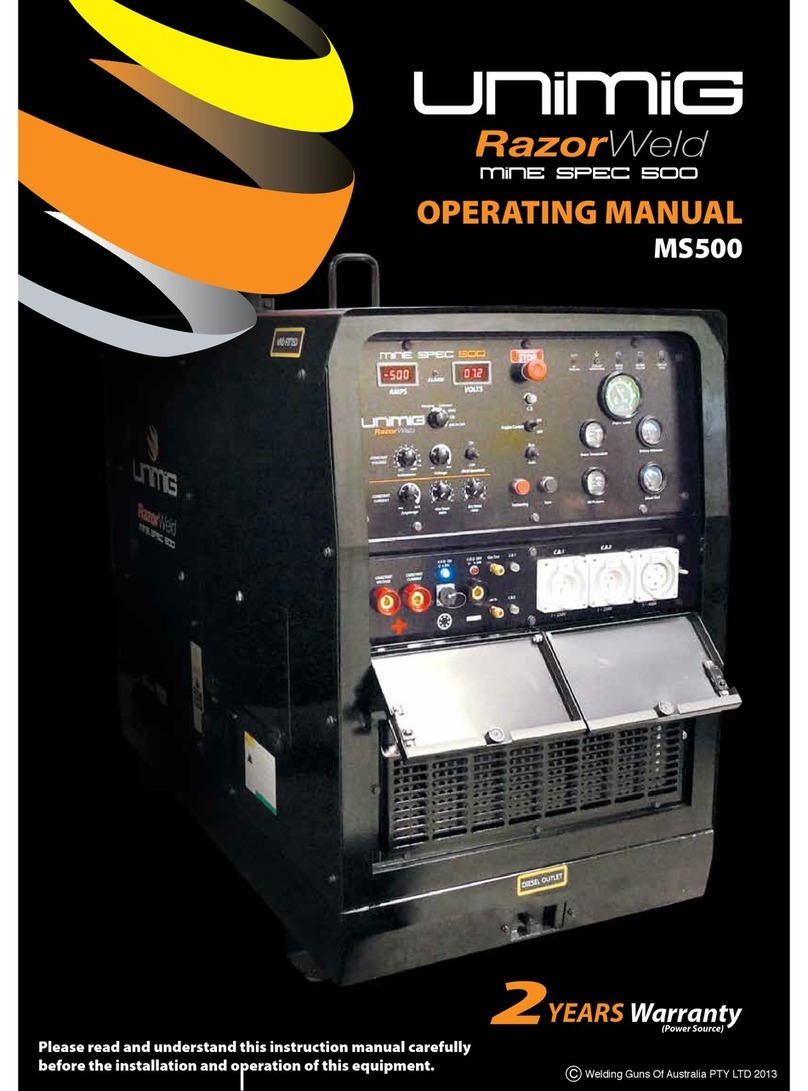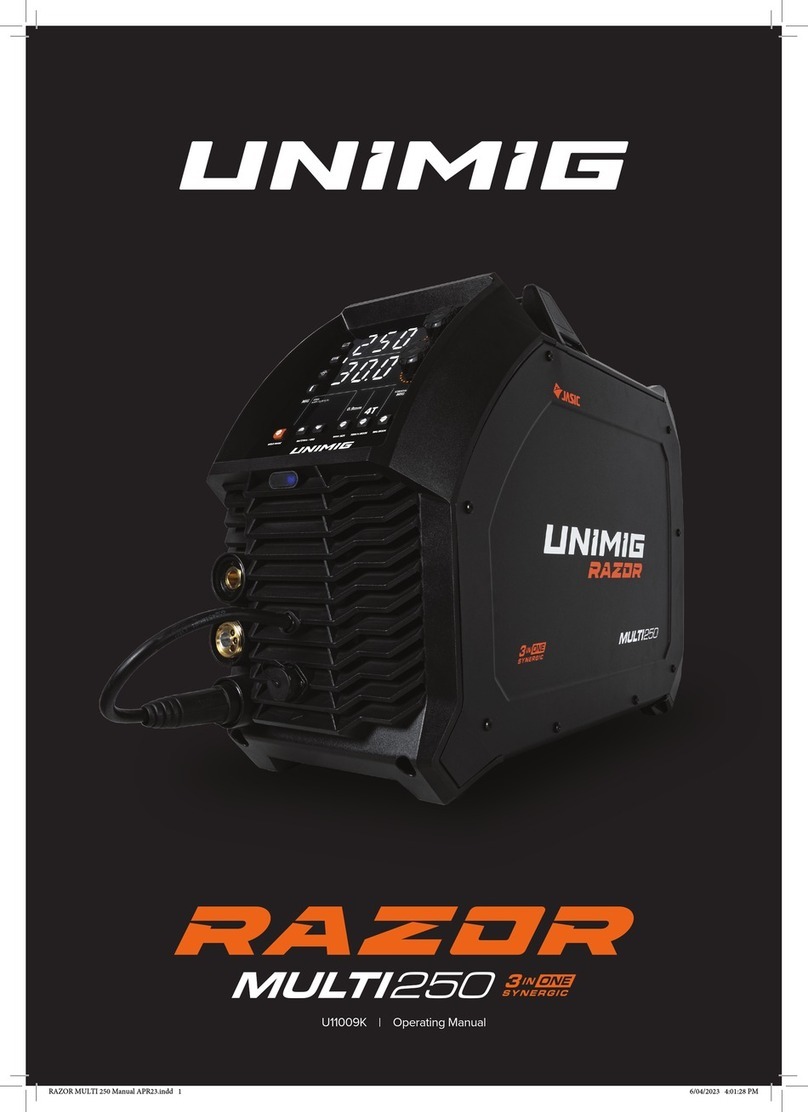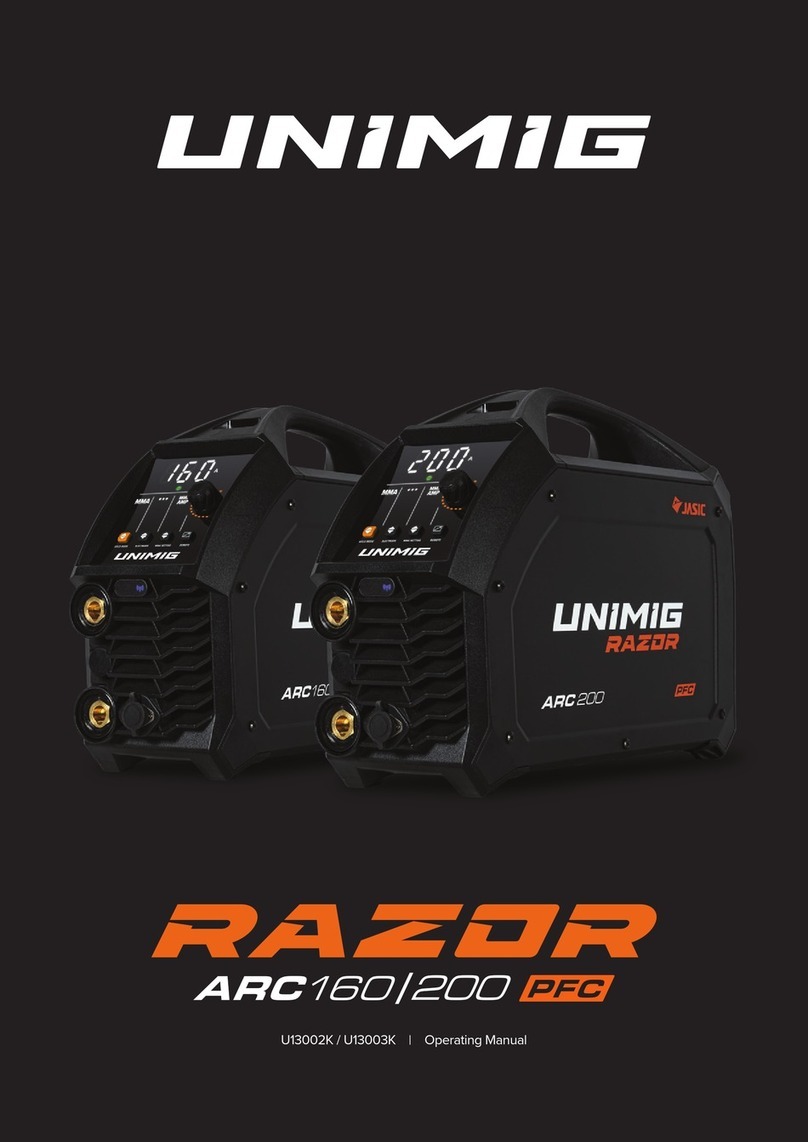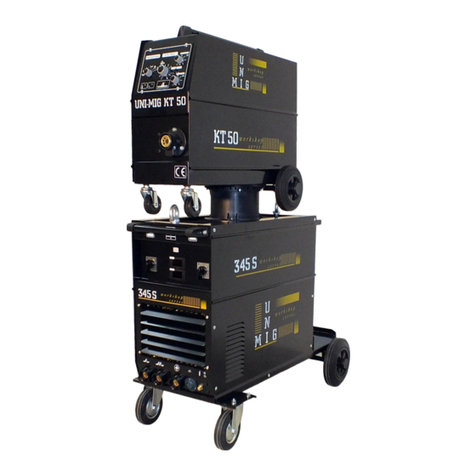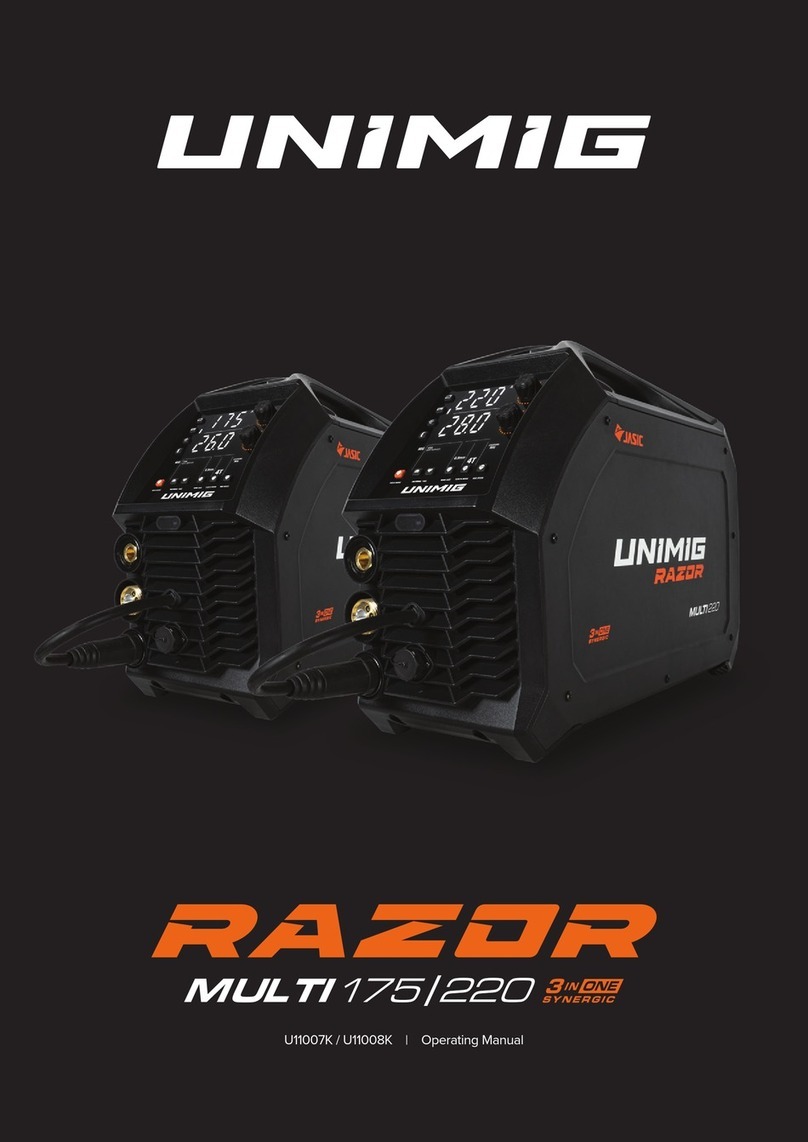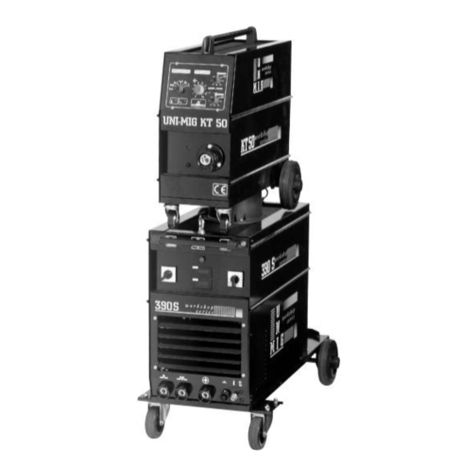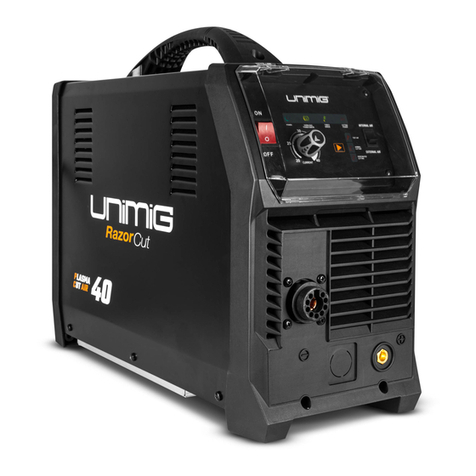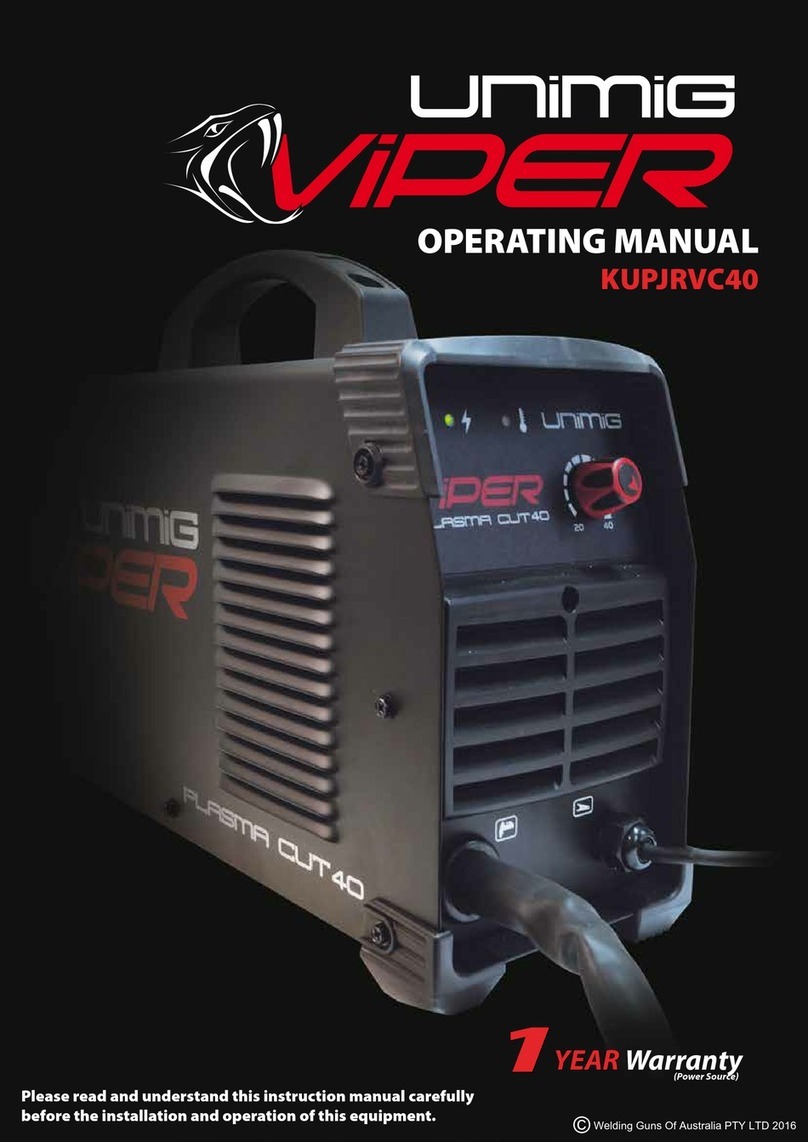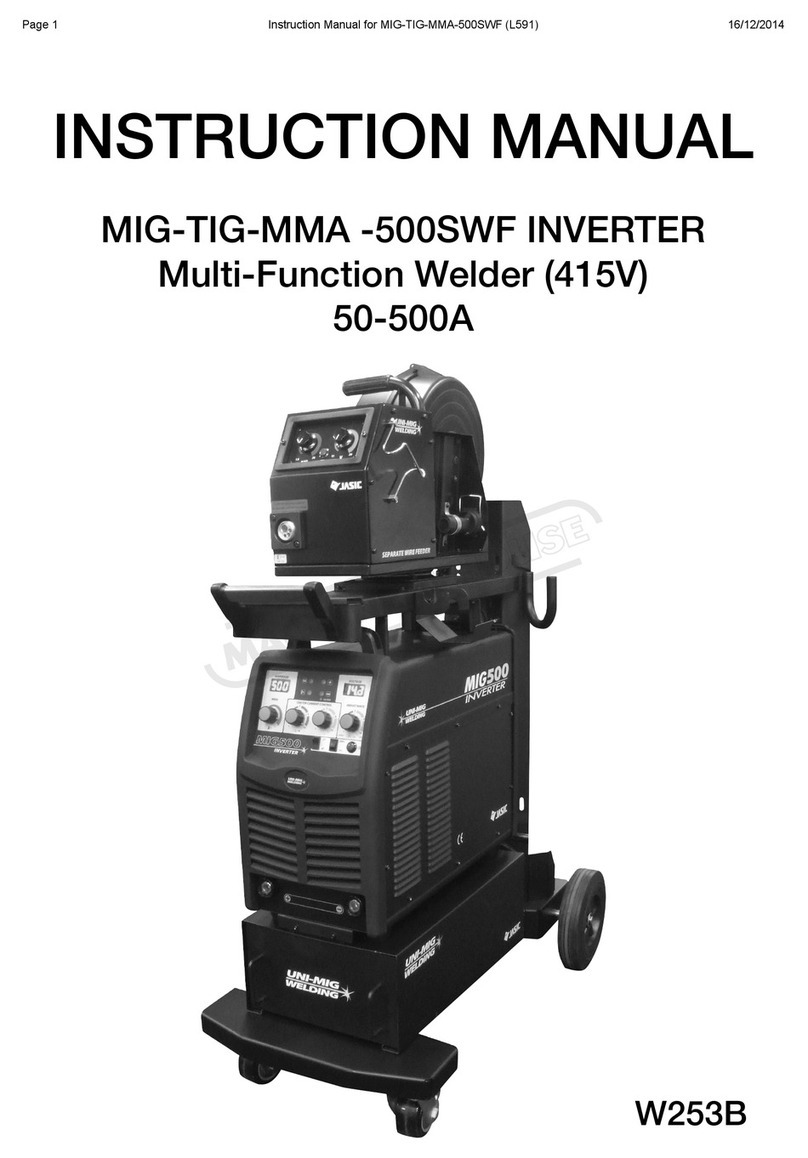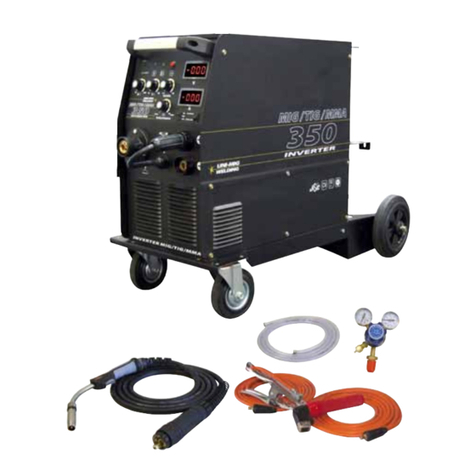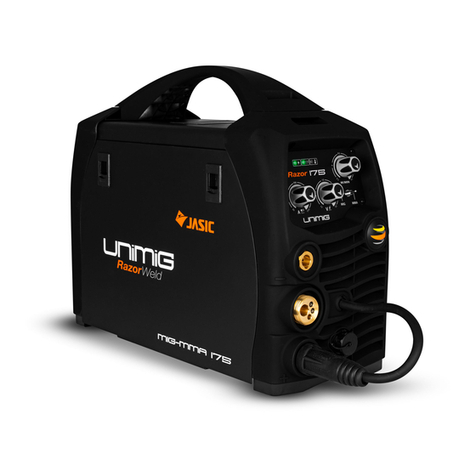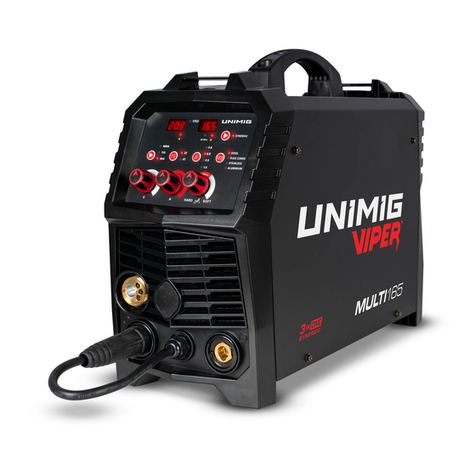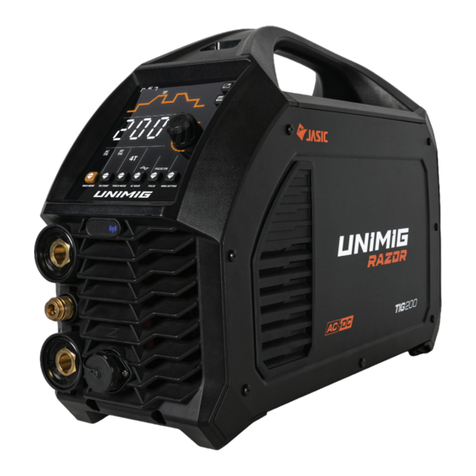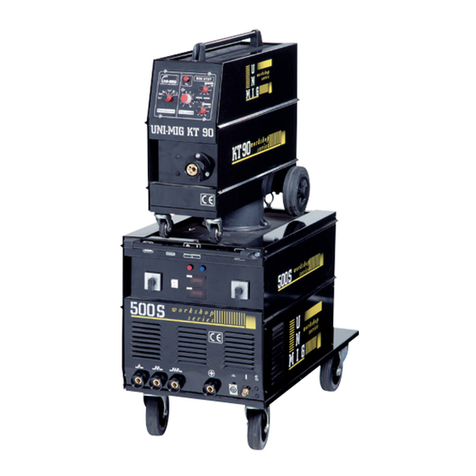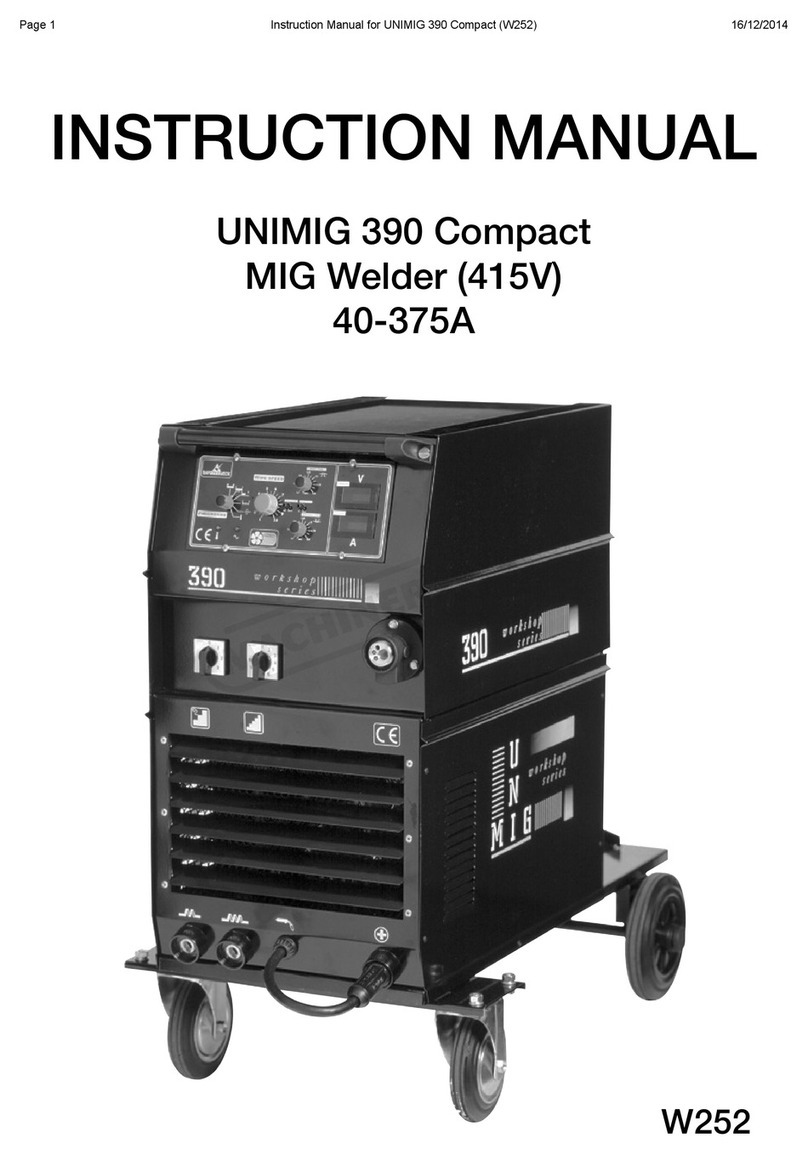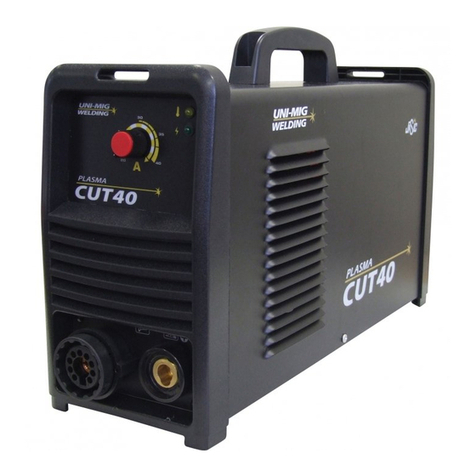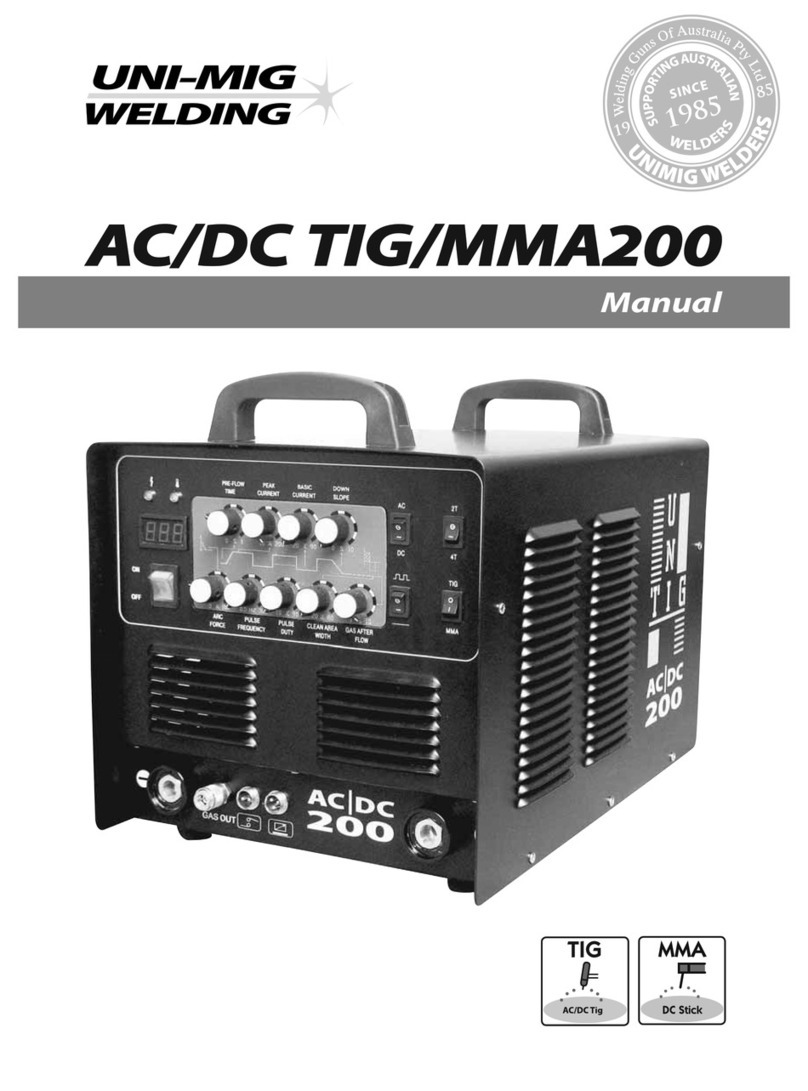2.4 GAS BOTTLE INSTALLATION
Put the gas bottle in vertical position on the gas bottle holder plane and position the bottle so that it is lays on the gas bottle
holder and fix it with the chain and the spring clip, like in pic E.
Tightly connect the gas hose, which comes from the back of the machine to the brass nipple of supplied regulator
adjust argon regulator to deliver the required litres per minute.
NOTE. reffer to instruction manual of argon regulator for proper use.
2.5 TORCH ASSEMBLY
To connect the torch, you just have to insert it into the designed EURO adaptor on the front of the machine and then turn the
collar tightly, like in pic.G. This way the electric connection as well as the gas connection is achieved.
2.6 WIRE SPOOL HOUSING
Put the wire spool on the paddle wheel and insert the wire in the wire feeder like in pic.H. The models can all hold either the 5
Kg or the 15 Kg spool. The paddle wheel has a clutch designed to maintain the wire pulled.
2.7 WIRE FEEDER MOTOR
Make sure that the size of the groove in the wire feeding roll corresponds to the size of the welding wire being used.
The machines are arranged with a feed roll for Ø 0,6 and 0, 8 wire. In case you want to use Ø 1 welding wire, ask for the
suitable feeding roll. The feeding roll has the wire diameter stamped on its side.
2.8 HOW TO INSERT THE WELDING WIRE
Cut the first 10 cm of the wire making sure that there are no burrs or distortions at the cut end.
Open the mobile arm of the wire feeder unscrewing the pressure screw of the arm pic. I.
Insert the wire into the wire guide passing it through the feed roll’s groove and then reinsert the wire into the second
alignement guide, like in pic. L. Make sure the wire lies in the feed roll’s groove in a natural line. Drop the pressure arm and
adjust the pressure through the specially designed screw, like in pic M.
The right pressure is the one that allows the even advancing of the wire.
In case the wire should jam, the driving wheel must slip so that the the wire itself doesn’t tangle.
In case the wire tends to unroll, you have to adjust the pressure through the designed screw so that the spool is always
pulled, like in pic N. On the contrary, if the clucthcauses an excessive friction and the driving wheel tends to slide, you have to
decrease it until the wire advances evenly.
3. SAFETY RULES
Welding can be dangerous to both operator and bystanders. The following safety rules are strongly recommended.
Personal cautions!
Wear suitable clothing, possibly without protruding pockets and turn up and avoid synthetic materials.
Always wear welding gloves.
Wear heavy duty shoes, high laced with steel caps.
Always use a welding mask fitted with a suitable dark lens, which have also a side protection.
Caution: gas fumes!
Ensure a good ventilation of the work area. If necessary, use an aspiration plant, above all in small working rooms.
Clean away from the work piece any rust, grease or paint to reduce fumes as much as possible.
Caution: short-circuit risk!
Make sure the electric net is provided with adequate earthing and protection against overloads and short circuits.
Make sure that all the main cables, torch, earth are in good conditions and replace if necessary.
Connect the earth cable firmly to the workpiece.
Do not wrap earth or torch cables around the body.
Do not point the torch towards people.
Avoid welding in wet or excessively damp conditions.
Do not operate the machine with its side panels removed.
Do not touch the contact tip on the torch or the workpiece.
Caution: explosion risk!
Do not weld in the proximity of inflammables.
Ensure the welding machine is positioned on a flat, stable level.
Tie the gas bottle to the machine with the chain provided, away from sources of heat.
Make sure you are using the correct gas mixture and the gas reducer is of a proved type and that it works properly.
Don’t use the machine for a tube defrosting activity.
The machine has an IP 21 protection level - it is not to be used or stored in the rain!
4. WELDING
It’s possible to regulate the welding functions selecting the PCB’s electronic card options, located on the generator
Switching the machine to position on, the display on the PCB show the last welding current measured.
